A well-maintained fence doesn’t just define your property boundaries—it enhances curb appeal, boosts security, and provides privacy for your home. But what happens when your once-sturdy fence starts to show signs of wear and tear? Whether it’s leaning posts, broken pickets, or storm damage, fence repair becomes essential for maintaining both the function and appearance of your fencing.
For homeowners across Central Virginia and the Tidewater region, understanding when and how to handle fence repair can save time, money, and frustration. While some issues may be cosmetic, others—like structural instability or compromised gates—can lead to safety hazards and even HOA violations if left unresolved. That’s why knowing the basics of residential fence repair is a crucial part of homeownership.
In this blog post, we’ll cover everything from identifying common fence problems to understanding repair options based on material type (wood, vinyl, and aluminum being the most popular). We’ll also explore when it's time to call in the pros for help.
Ready to bring your fence back to life? Richmond area customers can call 804-353-6030, and those in the Tidewater region—including Chesapeake, Norfolk, and Virginia Beach—can reach us at 757-853-5669. You can also submit an online request through our website and one of our experienced fencing professionals will respond promptly.
Contents
Common Fence Issues Homeowners Face
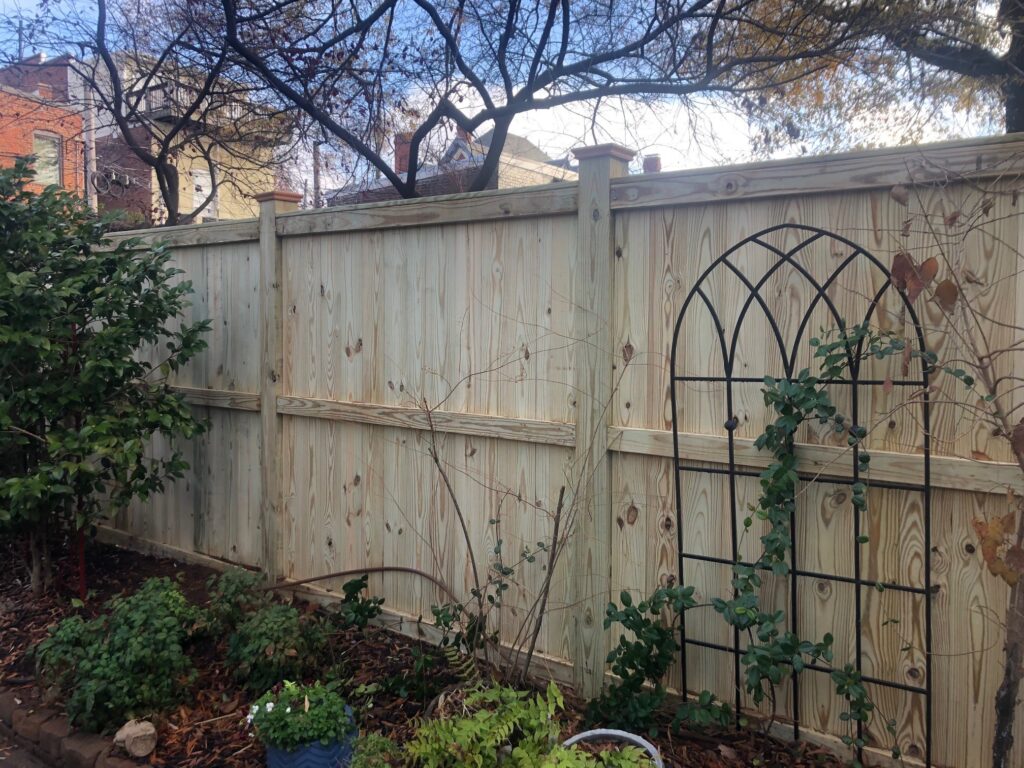
No fence lasts forever without a little upkeep. Over time, even the most professionally installed residential fences can encounter problems due to age, weather, or daily use. Recognizing these issues early—and knowing what they mean—can help homeowners act quickly and avoid larger, more expensive repairs down the line.
1. Leaning or Wobbly Posts
Perhaps the most obvious sign of trouble is a leaning fence. Whether due to high winds, soil erosion, frost heaving, or poor installation, unstable posts can compromise the entire structure. If left unaddressed, this can lead to full sections of fencing collapsing, especially in older wooden fences or those installed in loose soil.
Repair Tip: Depending on severity, repairs may involve re-setting posts in fresh concrete, adding support braces, or replacing rotted wood posts entirely.
2. Broken or Missing Boards and Pickets
Common with wood fencing, individual boards can break or fall out due to rot, insect damage, or physical impact (from pets, sports, or lawn equipment). While this might seem minor, it weakens the fence’s overall integrity and can compromise privacy and security.
Repair Tip: Replacing individual boards is a straightforward fix—but be sure to use treated lumber and match the original design for consistent appearance.
3. Cracked or Warped Panels
In vinyl and wood fences, extreme temperatures and moisture can cause cracking, warping, or splitting. This not only affects aesthetics but can create gaps in privacy fencing or make panels difficult to secure.
Repair Tip: Depending on material type, cracked panels may need full replacement, especially with vinyl fencing, where individual sections aren’t always repairable.
4. Rust and Corrosion
Aluminum fences are built to resist rust, but older or cheaper metal fences can develop corrosion, particularly in humid climates or coastal areas. Rust weakens joints and hinges, leading to sagging or compromised gate function.
Repair Tip: Rust should be removed promptly and treated with rust-inhibiting primer and paint. Severely corroded sections may need replacement.
5. Sagging or Misaligned Gates
Your fence gate sees the most use—so it’s no surprise it’s often the first component to need repair. Sagging, dragging, or misaligned gates can be caused by loose hinges, ground shifting, or warped frames.
Repair Tip: Most gate issues can be corrected with hinge adjustments, new hardware, or frame reinforcement.
6. Mold, Mildew, and Discoloration
Vinyl fences, in particular, are prone to mold and mildew buildup in shaded or damp areas. Wood fences may also develop discoloration from UV exposure or moisture. While this doesn’t always affect structural integrity, it can make your fence look prematurely aged.
Repair Tip: Power washing or gentle scrubbing with soap and water can usually restore appearance. In wood fences, re-staining or sealing may be needed.
How Fence Repairs Differ by Material Type
Not all fences are created equal—and neither are their repair methods. The material your fence is made from will determine what types of damage are most common, how easily those issues can be fixed, and whether repair or replacement is more cost-effective. Here's a breakdown of the repair strategies for the three most common residential fencing materials: chain link, wood, vinyl, aluminum, and composite.
Chain Link Fence Repairs
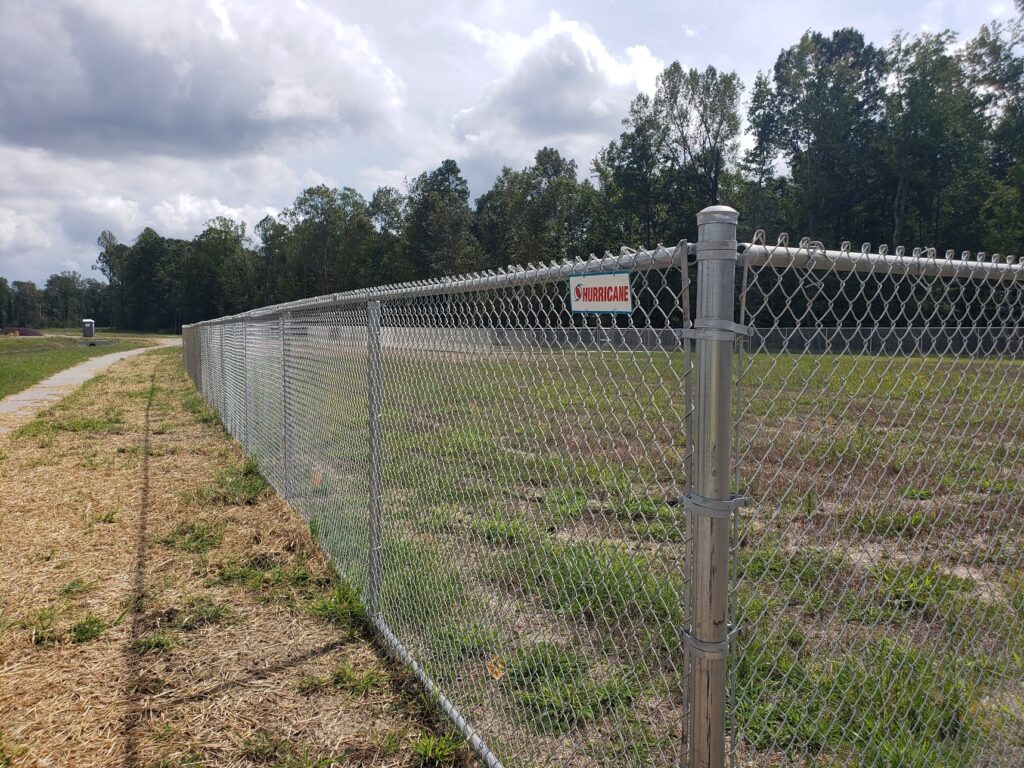
Chain link fencing is a cost-effective, durable option that's commonly used for both residential and commercial properties. While it's highly resistant to weather and pests, it can still suffer from wear and tear—especially in areas with heavy use or shifting ground.
Typical Chain Link Fence Repairs Include:
- Replacing Damaged Fabric: Over time, the mesh can become bent, sag, or even break due to impact or rust. Damaged sections can usually be cut out and replaced without needing to replace the entire fence.
- Tightening or Replacing Tension Bands: If the chain link becomes loose, the tension bands or tie wires may have degraded. These can be replaced or tightened to restore tautness and structure.
- Post Straightening or Replacement: If a post is leaning or has come loose in its concrete footing, it may need to be reset or replaced entirely to restore stability.
Pro Tip: Galvanized chain link resists rust better than uncoated metal—but in coastal or high-humidity areas, consider upgrading to vinyl-coated chain link for extra protection and longevity.
Wood Fence Repairs
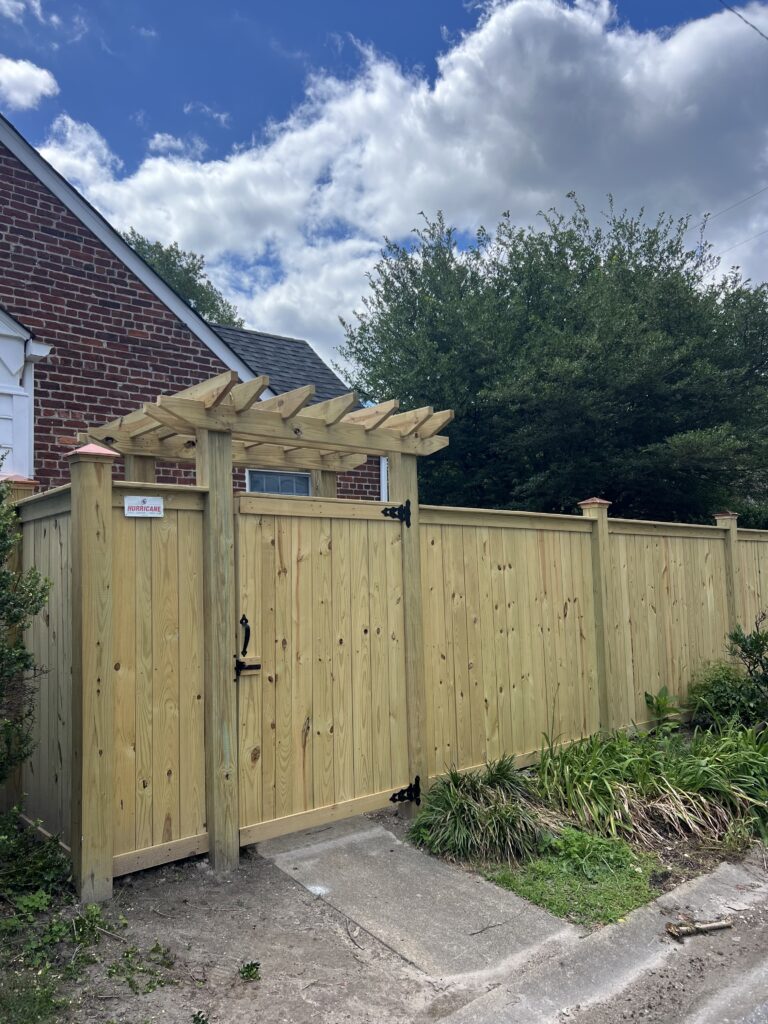
Wood remains a top choice for residential fencing thanks to its classic appeal and affordability. But as a natural material, it’s also the most susceptible to weathering, rot, insect damage, and warping.
Common Wood Fence Repairs Include:
- Replacing Rotting or Broken Boards: Damaged pickets and rails can often be swapped out individually.
- Resetting or Reinforcing Posts: Loose or leaning posts may need to be re-installed with new concrete footings or replaced entirely.
- Staining and Sealing: Restores appearance, protects from UV rays, and helps prevent further moisture damage.
- Insect Treatment: If termite or carpenter ant damage is discovered, it's vital to remove affected boards and treat surrounding areas.
Pro Tip: Pressure-treated wood or cedar is more resistant to decay, making future repairs less frequent when properly maintained.
Vinyl Fence Repairs
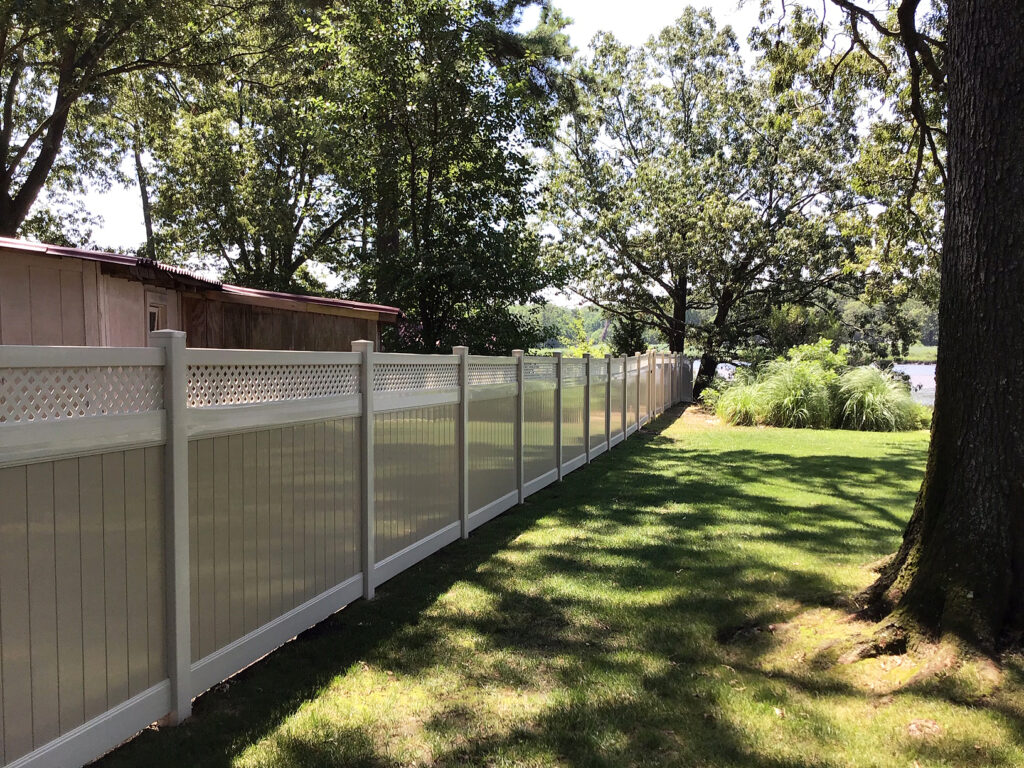
Vinyl fencing is known for its low maintenance and resistance to rot, pests, and rust—but it can still crack or break under pressure or in extreme cold. The modular design of vinyl fencing means entire panels or sections often need to be replaced rather than repaired.
Typical Vinyl Fence Repairs Include:
- Replacing Cracked Panels or Posts: Vinyl parts can become brittle over time, especially in colder climates. Often, the entire panel must be replaced for a seamless look.
- Cleaning and Mold Removal: A soft brush and mild detergent are usually sufficient. For more stubborn stains, diluted bleach or specialized vinyl cleaners may be used.
- Realigning Gates: Vinyl gates can sag if their frames loosen—this can typically be resolved by adjusting hinges or hardware.
Pro Tip: Always match replacement parts to your existing fence's manufacturer and style to avoid mismatched components.
Aluminum Fence Repairs
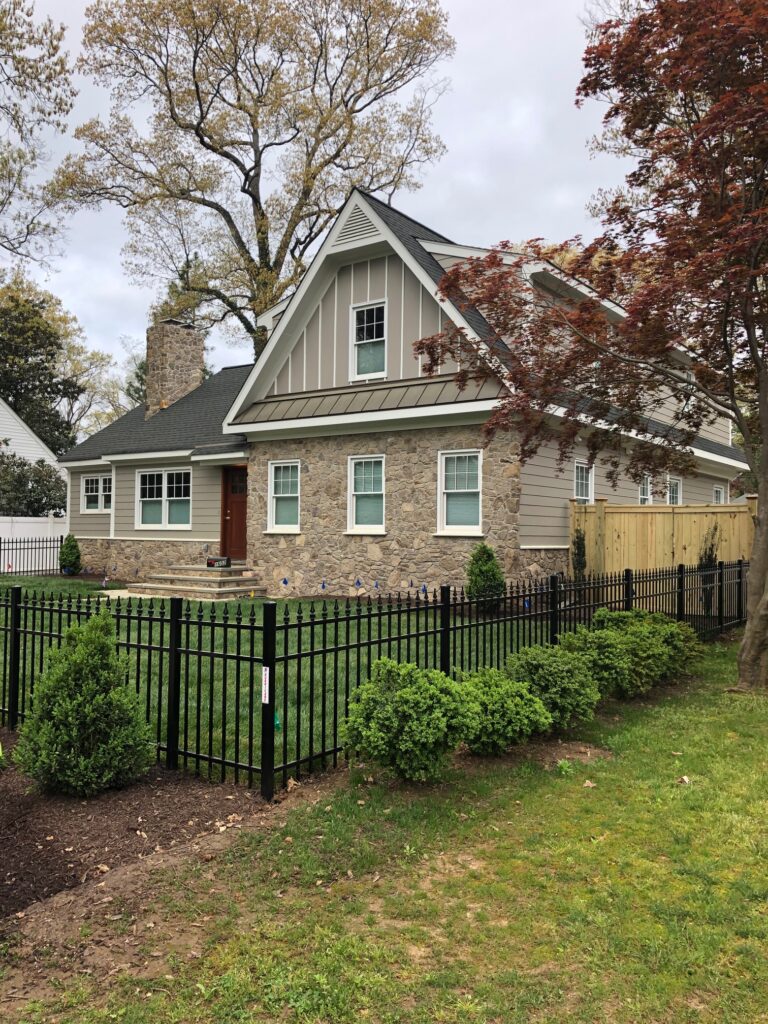
Aluminum fences are prized for their durability, sleek look, and resistance to rust. They typically require fewer repairs than wood or vinyl, but damage can still occur from physical impact or improper installation.
Common Aluminum Fence Repairs Include:
- Straightening Bent Pickets or Rails: Aluminum is less likely to crack than vinyl but can bend under force. Minor bends can often be corrected with specialized tools.
- Repairing or Replacing Gates: Frequent use may cause gate hinges or latches to loosen. Re-alignment or new hardware is usually the fix.
- Powder Coat Touch-Ups: While aluminum doesn’t rust, scratched or chipped paint should be touched up to maintain appearance and protect against long-term wear.
Pro Tip: Be cautious with DIY fixes—aluminum repairs often require precision tools to maintain the integrity of the material and coating.
Composite Fence Repairs

Composite fencing combines recycled wood fibers and plastic to offer the look of wood with lower maintenance. It’s strong, insect-resistant, and doesn’t require staining—but it can still suffer damage, especially from impact or installation issues.
Common Composite Fence Repairs Include:
- Replacing Cracked or Warped Boards: While composite is more stable than wood, heavy impacts or manufacturing defects can cause boards to crack or bow. Damaged boards usually need full replacement.
- Realigning Posts or Panels: Shifting soil or improper installation may cause posts to lean or panels to misalign. Re-setting posts or adjusting fasteners can often correct these issues.
- Cleaning and Mildew Removal: Though more resistant than wood, composite surfaces can still develop mold or stains in shaded or damp conditions. Use a soft brush and a composite-safe cleaner to restore appearance.
Pro Tip: Composite materials vary by manufacturer—always use matching replacements to ensure consistent color, grain, and hardware compatibility.
Fence Repair or Full Replacement? How to Decide
When your fence is damaged, one of the toughest decisions homeowners face is whether to patch the problem or start fresh with a full replacement. While minor issues can often be resolved with targeted repairs, more extensive damage—or aging materials—might mean that replacement is the smarter long-term investment. Here’s how to make an informed choice.
1. Consider the Age of the Fence
Each fencing material has an expected lifespan:
- Wood fences typically last 10–20 years with proper maintenance.
- Vinyl fences often last 20+ years.
- Aluminum fences can last 30 years or more.
If your fence is approaching the end of its functional life, ongoing repairs might only provide temporary relief. In these cases, a new installation could offer better value and peace of mind.
2. Assess the Extent of Damage
A few loose boards or a single cracked panel? That’s a quick repair. But if you’re facing:
- Multiple leaning or rotted posts
- Large sections of discoloration or rot
- Widespread cracking or panel breakage
- Several rusted or bent aluminum sections
… then the repair costs can add up quickly—and the overall strength and appearance of the fence may still be compromised. A full replacement ensures consistent durability and aesthetics.
3. Factor in Curb Appeal and Home Value
A fence in poor condition can drag down your home’s visual appeal and perceived value. If your fence is visibly weathered, mismatched from past repairs, or detracting from your landscaping, investing in a new fence may pay dividends in curb appeal—especially if you’re planning to sell your home.
4. Think About Maintenance Costs
Older wood fences often need frequent maintenance—cleaning, staining, replacing boards. Replacing with vinyl or aluminum may reduce your long-term costs and save significant time on upkeep.
Repair might be best if:
- Less than 25% of the fence is affected
- The underlying structure is solid
- You’re planning to move soon and just need a short-term fix
Replacement might be best if:
- Over 25–30% of the fence is damaged
- The material is outdated or no longer available
- Repairs will cost more than half of a new installation
Why Professional Fence Repair Is Worth It
While some minor fence repairs may seem like ideal DIY projects, there are several compelling reasons to hire a professional—especially when it comes to preserving the safety, appearance, and long-term value of your fence. At Hurricane Fence, we’ve seen firsthand how professional repairs can make all the difference.
1. Expertise in Material Handling
Each fence material—whether it’s wood, vinyl, or aluminum—requires different tools, techniques, and installation methods. Professionals understand:
- How to properly match and install replacement parts
- The best materials for long-lasting repairs
- How to prevent new issues from arising during a fix
Misjudging how to cut or fasten a vinyl panel, for instance, can lead to cracking or sagging over time. Improper concrete setting on wood posts can result in leaning fences in just a few months.
2. Accurate Diagnosis of Underlying Issues
What looks like a broken board may actually be a symptom of a deeper problem—like shifting soil or post rot. Professionals can spot structural vulnerabilities that the average homeowner might miss. This ensures the root cause is addressed, not just the visible damage.
3. Compliance with Local Codes and HOA Guidelines
Fence repair often involves more than just the fence itself. In many neighborhoods, there are:
- Height restrictions
- Material and color rules (especially for vinyl and aluminum)
- Property line regulations
- Permit requirements for certain types of repairs
A professional repair service like Hurricane Fence understands these requirements and ensures your project stays compliant, avoiding fines or future headaches.
4. Enhanced Curb Appeal
Let’s face it: patchy repairs, mismatched materials, or misaligned panels can make even a sturdy fence look unattractive. Professionals ensure a seamless repair that blends perfectly with the existing fence, preserving the beauty and value of your home.
5. Safety and Efficiency
Fence repairs often involve digging, sawing, or working with heavy or sharp materials. Hiring an experienced team not only keeps the job safe but speeds up the process. What might take a weekend (and a few YouTube tutorials) for a homeowner could be wrapped up in a few hours by professionals—with cleaner, more durable results.
Fence Repair: A Smart Move for Long-Term Value
From leaning posts and broken boards to weathered panels and sagging gates, fence damage is more than just an eyesore—it can impact safety, privacy, and your property’s value. But with timely, professional fence repair, you can extend the life of your fence, maintain neighborhood aesthetics, and avoid the bigger costs of full replacement.
Whether you have a traditional wood privacy fence, a low-maintenance vinyl installation, or a sleek aluminum design, addressing problems early ensures your fence continues to do its job—and look great doing it. And when you partner with a trusted team like Hurricane Fence, you get expert workmanship, code-compliant repairs, and results that blend seamlessly with your existing structure.
We’ve been helping homeowners across Richmond and the Tidewater region since 1994, and we understand the unique challenges that fences face in Virginia’s climate. From diagnosis to repair, we make the process easy and stress-free.
Ready to get started, and looking for a quote? Richmond, VA area customers can call 804-353-6030 and Tidewater and Hampton Roads, VA area customers can call 757-853-5669 to speak with one of our fence installation professionals. You can also submit an online request form here.
Let Hurricane Fence help you protect your investment, restore your fence, and improve your property—one picket at a time.

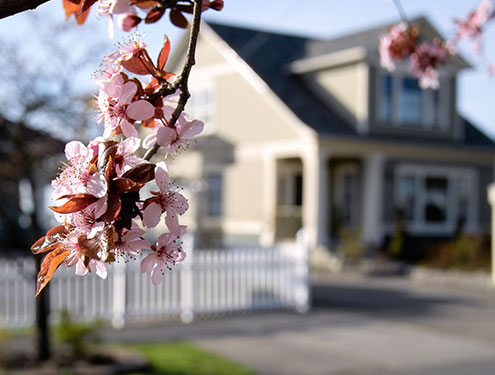
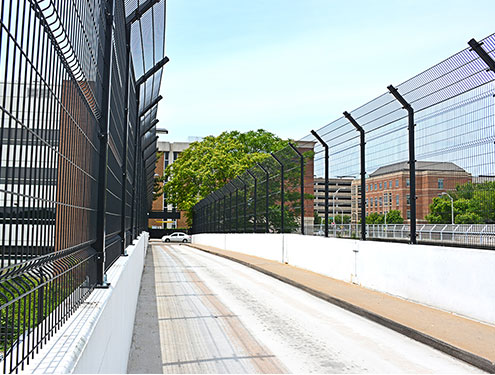

Leave a Reply